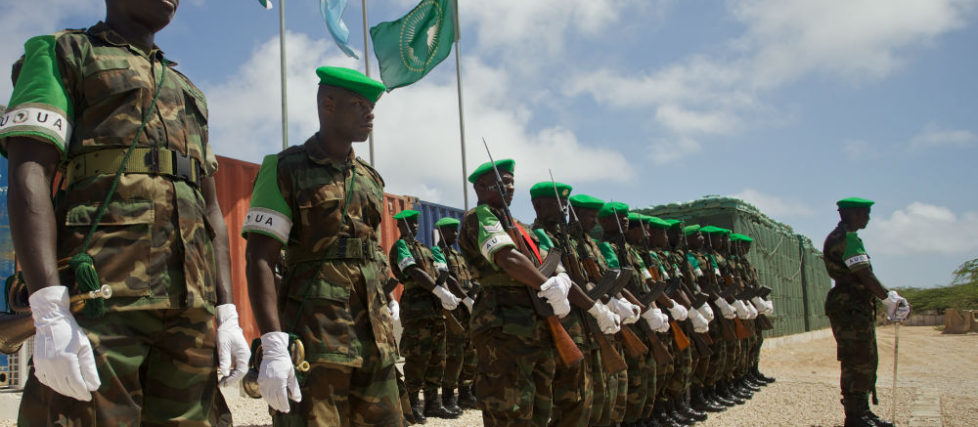
Question: What are the top security priorities that should be on the agenda during President Obama’s visit to Kenya and Ethiopia?
NICKELS: The trip should provide President Obama an opportunity to discuss developments in Somalia and next steps for the African Union Mission to Somalia (AMISOM), to which both Kenya and Ethiopia have become key contributors. Border security is another good candidate for the agenda. It brings together diverse concerns, from drug smuggling and weapons trafficking to cattle rustling and cross-border trade in ways that are important for the United States, Kenya, and Ethiopia. The visit also provides the occasion to reinforce messages about the relationship between governance, accountability, and efficiency on the one hand and successful defense and security outcomes on the other. Kenya and Ethiopia have resorted at times to repression of political deliberation and dissent in the name of security and this should not be passed over in silence when the discussions take place.
Question: Why are security issues in the Horn of Africa of growing concern? How much of a threat is al-Shabaab?
NICKELS: Some security issues have actually witnessed a declining level of concern in recent years—most notably piracy off the Somali coast. We have similarly seen relative improvements in political stability in Somalia along with the diminishing in the area under the control of Al-Shabaab. That said, there are growing concerns regionally and internationally that the Greater Horn of Africa is prone to further destabilization by internal conflicts that spill across borders (like the violence in South Sudan and Burundi). Another area of growing concern has to do with the spread of radicalization, especially inside Kenya, which has suffered the Westgate and Garissa terrorist attacks in recent years. Al-Shabaab, meanwhile, remains a serious concern, both as an obstacle to Somalia’s political reconstruction and as a threat to the region.
Question: Kenya’s leaders have announced they will take a tough line against terrorism. Why is this threat on the rise and is the country in a position to overcome the challenge?
NICKELS: The rise in terrorism in Kenya is partially a spillover from Somalia, resulting from AMISOM’s successes in pushing Al-Shabaab off of territory in Somalia. This also reflects al-Shabaab’s search for direction and its own internal churn, with a leadership succession, a power grab within the organization by Al-Shabaab’s amniyat (internal security), and purges of foreign fighters.
Another aspect of the rise of the terrorist threat in Kenya has to do with unaddressed grievances, especially along the coast, which terrorist groups are effectively tapping to advance their cause. The response by Kenya’s security sector has often defaulted to repressive policing of Somalis within Kenya and broadstroke policy decisions like announcing an impending closure of the Dadaab camps that house 450,000 refugees. If it wants to avoid the abuses and impunity that contribute to cycles of radicalization and repression, Kenya has to work on improving the effectiveness and professionalism of its forces, especially its police.
Question: What lessons have been learned in combating violent extremist organizations in the Horn of Africa over the years? How should this shape efforts to counter violent extremism in this region?
NICKELS: Violent extremist organizations have proven persistent. They have endured drone strikes on leaders, internal power struggles, and changing fortunes in funding and territory. They have managed to expand and to contract with the times. Above all, they have been able to survive. Violent extremist organizations have also shown an ability to undermine or spoil political efforts at reconciliation and advancement, by attacking nascent institutions and by playing clan loyalties, provincial grievances, illicit markets, and local politics very astutely. This reality should temper expectations for defeating violent extremists in the short to medium term. Sound counterterrorism practices are required. However, focus is also needed on building effective governance institutions, viable livelihoods, and societal harmony, to slowly sap the strength of terrorist groups in the Horn.
Additional Resources
- Hussein Solomon, “Africa’s Weaknesses Will Ensure that Terrorism Will Escalate,” Research Institute on Muslims in Africa (RIMA). Occasional Papers, Vol 3, No 5, July 2015
- Jeremy Lind, Patrick Mutahi, and Marjoke Oosterom, “Tangled Ties: Al-Shabaab and Political Volatility in Kenya,” IDS Evidence Report No. 130, April 2015.
- Terje Østebø, “Salafism, State-Politics, and the Question of ‘Extremism’ in Ethiopia,” Comparative Islamic Studies, Vol. 8, No. 1-2, 2014.
- International Crisis Group, “Kenya: Al-Shabaab – Closer to Home,” Africa Briefing No. 102, September 25, 2014.
- Africa Center for Strategic Studies, “Preventing Youth Radicalization in East Africa,” Program Summary, January 2012.
More on: Countering Violent Extremism Al Shabaab Horn of Africa Kenya

